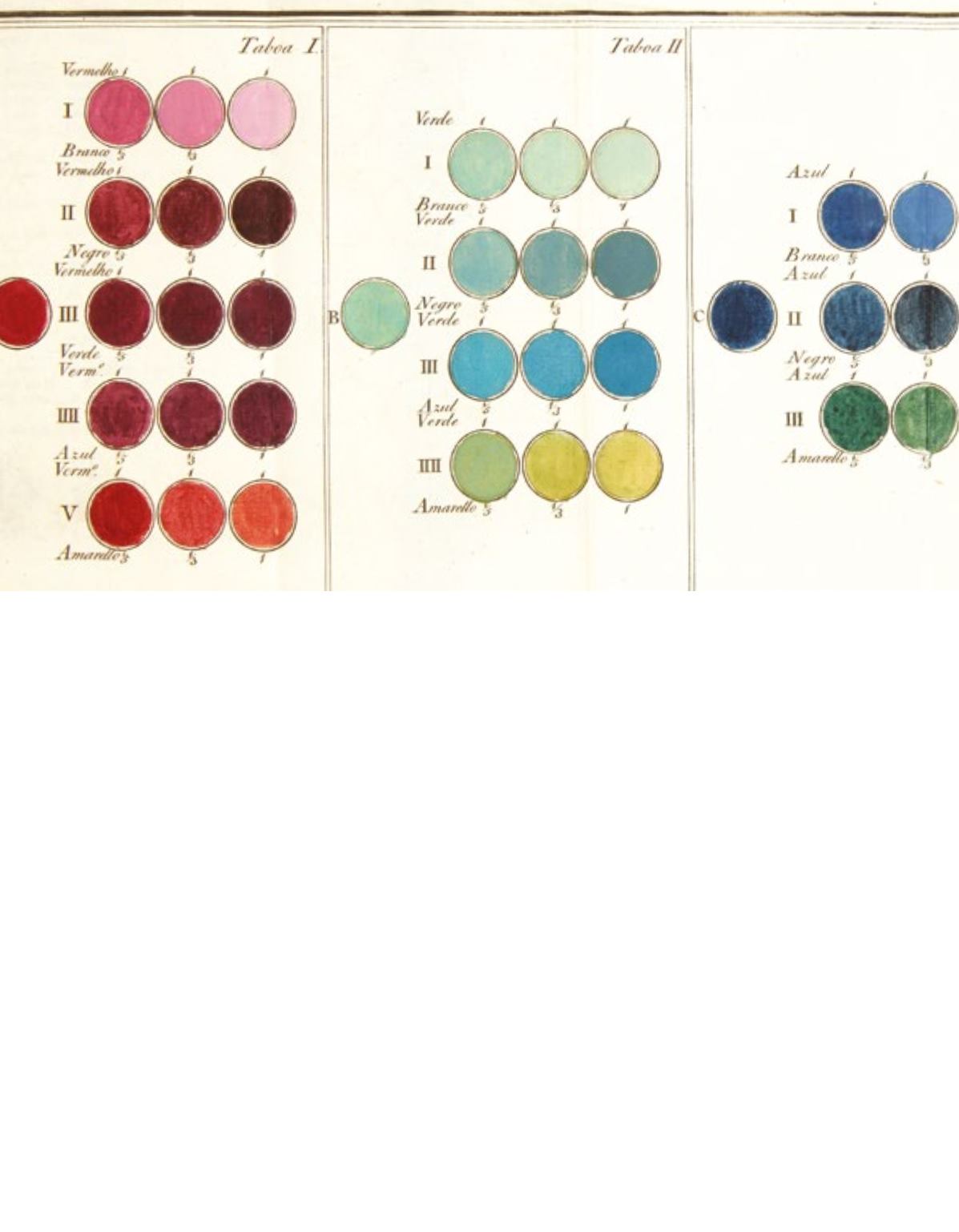

90
68
CARVALHO Y SAMPAYO, Diogo de.
Dissertaçâo sobre as cores primitivas : com hum breve tratado
de composiçao artificial das cores.
Lisbonne, Regia officina typografica, 1788.
In-8 (189 x 120 mm) de
X, 148 pp., 1
f.n.ch.(errata), 2 planches dépliantes gravées dont une coloriée à l’époque ; veau vert,
double filet doré encadrant les plats, dos lisse orné, tranches dorées
(reliure de l’époque).
1 200 / 1 500
€
Édition originale.
Important traité sur la théorie des couleurs.
Divisé en deux grands chapitres, le théoricien de la couleur portugais Diogo de Carvalho y Sampayo
(1750-1807) aborde dans un premier temps les couleurs simples, pour ensuite donner leur composition.
Son influence sur le célèbre traité de Goethe
Zur Farbenlehre
est évidente et le poète scientifique
allemand cite Carvalho y Sampayo dans son ouvrage (voir n°159).
“
In Goethe’s
Zur Farbenlehre
one finds a general assessment of Carvalho e Sampayo’s book
Memoria sobre
a formacao natural das cores
... It is clear that research concerning the influences and contributions of
Carvalho e Sampayo’s work
Zur Farbenlehre
is required in parallel to a cross-comparative assessment of
the methods used at the time for the study of color phenomena. By the eighteenth century, color involved
academics, colour makers, and manufacturers as well as tradesmen, and there were already established
industries in printing, ceramics, glass, textiles and color materials from painting. Furthermore color was also
subject for theoretical pursuits in connecting with art, science and philosophical thought
” (Leonor Ferrao,
View on Eighteenth-Century Culture
, p. 299).
Bel exemplaire, bien complet des planches gravées, dont une coloriée, “
that illustrate and elucidate the
color system of Carvalho e Sampayo
”.
First edition of this important work by the Portuguese writer Carvalho y Sampayo which had exerted
an influence on Goethe and his
Farbenlehre
, published in 1810. Complete copy, with the two engraved
plates (one coloured), documenting the author’s theories.
















